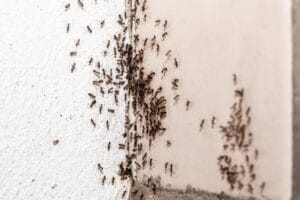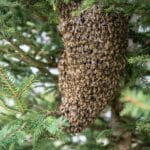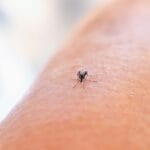Main Points
- Children can be safeguarded from dangerous chemicals by using natural and non-toxic pest control methods.
- Preventative steps are key to ensuring a pest-free home environment.
- Plants and beneficial insects can be used as effective and safe pest deterrents.
- If you follow the correct instructions, you can use DIY solutions safely.
- It’s crucial to teach children about pest safety and include them in prevention practices.
Understanding the Dangers of Traditional Pesticides to Children

When it comes to keeping our homes free of pests, the safety of our little ones is our top priority. Traditional pesticides often contain chemicals that can be harmful to children, who are more susceptible to toxins because their bodies are still developing. These chemicals can remain on surfaces, in the air, and on toys, creating a risk of accidental ingestion or inhalation. As a result, it’s not just about getting rid of pests, but doing so in a way that doesn’t jeopardize our children’s health and safety.
Think about this: kids spend a lot of time on the floor, they often put things in their mouths, and their tendency to touch everything and then touch their mouths puts them at a higher risk of exposure to chemicals. This means that when we spray for bugs, we’re not just spraying the bugs, we’re also potentially exposing our kids to harmful chemicals. That’s why it’s so important to look for child-safe pest control options that work well but are also safe to use around our most vulnerable family members.
Using Nature to Keep Pests at Bay
So, what are some child-friendly pest control methods? First, let’s talk about natural deterrents that you can easily incorporate into your home. These include essential oils like peppermint, lavender, and eucalyptus, which can repel insects without the use of harsh chemicals. For example, a few drops of peppermint oil on cotton balls placed around the house can keep spiders at bay. Most importantly, these natural options are safe for children and can provide a pleasant aroma to your home.
Guardians of the Garden: Safe Pest Control Methods
Plant-Based Pest Control

Did you know that some plants naturally repel pests? Plants like citronella, marigolds, and lemongrass can help keep mosquitoes and other pests away, just by being in your garden or in a pot inside your house. Plus, these plants add a bit of color and life to your home, so they’re a great two-in-one solution.
Here are some plants you might want to think about:
- Citronella: This plant is well-known for its ability to repel mosquitoes.
- Marigolds: They give off a smell that keeps many insects away, including those that like to eat tomato plants.
- Lemongrass: This plant has citral, a natural oil that mosquitoes don’t like. Discover more about pest-proofing secrets to enhance your insect repellent strategy.
Friendly Bugs: Your Garden’s Best Friends
It may not make sense at first, but having some insects in your garden can actually help manage the number of pests. Ladybugs, for example, eat aphids, which are a common pest in gardens. By bringing in these helpful bugs, you can keep your garden’s ecosystem balanced and cut down on the need for chemicals.
Keep It Clean: Your First Line of Defense

As the saying goes, prevention is better than cure, and that’s certainly the case when it comes to pest control. The best way to keep pests at bay is to keep your home clean and free from clutter. Make sure you take out the trash regularly, store food in sealed containers, and block any cracks or crevices that pests could use to get in. These simple measures can go a long way in preventing a pest infestation.
Another way to keep pests away is to make sure your home isn’t an inviting place for them to live. This means you should fix any leaky faucets and avoid leaving standing water around, as these things can attract pests like mosquitoes and rodents. Regularly checking around your house can help you find and fix these issues quickly.
Child-Friendly Cleaning Tips
Regular cleaning isn’t just for maintaining a clean home; it’s also a critical part of preventing pests. But how can we clean in a way that’s safe for children? Use natural cleaning products like vinegar, baking soda, and lemon juice to keep your home shiny without the use of harsh chemicals. For instance, a solution of vinegar and water is a great way to clean windows, and baking soda can be used to scrub surfaces clean.
Keeping a Pest-Free Home
Make your home less inviting to pests by properly storing food and taking out the trash on a regular basis. Use airtight containers for items in your pantry, and ensure that your trash cans have lids that fit securely. Repair any pipes that are leaking and don’t let water build up anywhere in or around your house. Remember, pests are in search of food, water, and a place to live. If you don’t provide these, they’re less likely to stick around.
Always keep an eye out for any signs of pests in your home. This could be droppings, damage to plants or fabrics, or even sounds like scratching in the walls. If you notice any of these signs, act quickly to identify the pest and decide on the best child-safe method to address the problem.
What to Do if Pests Break Through Your Defenses

Despite your best efforts to keep pests out, sometimes they still manage to get inside. If you notice this happening, don’t worry. There are ways to handle the situation that won’t put your child in danger. The first step is to figure out what kind of pest it is. That way, you can make sure to use the safest and most effective method to eliminate them.
For instance, if you have an ant problem, a basic solution of liquid dish soap and water can serve as a pesticide. Spray it right on the ants and the paths they take. This not only gets rid of the ants, but it also removes the scent trail they leave behind, stopping other ants from following in their tracks.
Safe and Simple DIY Pest Control Remedies
DIY pest control remedies can be effective, but they must be used correctly to ensure they are safe for children. Here’s a safe and simple recipe for an all-purpose pest repellent spray:
- 2 cups of water
- 1 teaspoon of natural dish soap
- 20 drops of peppermint essential oil
Combine these ingredients in a spray bottle and shake well. Use it around entry points and areas where pests are common. The soap suffocates the pests, while the peppermint repels them.
When to Call a Professional: Choosing Child-Safe Pest Control Services
When your pest problem becomes too much to handle, it’s time to call in the professionals. Look for pest control services that focus on child-safe and environmentally friendly practices. They should be open to discussing their methods and products, and they should assure you that their products are safe to use around children. Don’t be shy about asking questions and requesting material safety data sheets for any products they intend to use in your home.
Teaching the Children

One of the ways we can make our homes safer is by teaching our kids about why pest control is important and what risks pests can pose. Let them know why they shouldn’t leave food out, why they need to clean up any crumbs, and how to properly throw away garbage. It’s also a good idea to teach them how to recognize the signs of pests and to tell an adult if they see something.
Children can enjoy and learn from participating in pest prevention. Make it a game to find where pests might get in or plant a garden with plants that repel pests. These activities can help protect your house and teach your children to be responsible.
How to Discuss Pest Safety with Children
When talking to children about pest safety, use simple language. Explain that just like we don’t want strangers in our homes, we don’t want bugs or rodents either. Let them know that some bugs are helpful in the garden but can cause problems if they get inside the house. Always remind them that if they find something, they should tell you right away and never touch it to reduce their chances of pesticide poisoning.
Getting Kids Involved in Safe Pest Control
Include your kids in your pest control activities by giving them tasks that are suitable for their age. They can assist with gardening, arranging the pantry, or even creating homemade pest deterrents. This not only aids in keeping your home safe, but it also imparts important life skills. Furthermore, when kids are part of the solution, they are more likely to take ownership of keeping the home free from pests.
Keep in mind, child-friendly pest control isn’t just about utilizing the correct products, but also about fostering a safe space where pests are less likely to be an issue. By using these tactics and staying alert, you can maintain a home that is both free of pests and safe for all family members.
Common Questions
Are all natural pest control methods safe for kids?

Many natural pest control methods are safer than their chemical counterparts, but not all are child-friendly. You need to do your homework and understand the ingredients and their impacts. For example, certain essential oils can be dangerous if swallowed or put directly on the skin without being diluted properly. Always be careful with natural methods and keep them out of kids’ reach.
What’s the best way to clean toys and play areas without using harsh chemicals?
You can easily clean toys and play areas with a mixture of vinegar and water. Simply combine equal parts of white vinegar and water in a spray bottle, spray it on toys and surfaces, and then wipe them clean. If you’d like a nicer smell, consider adding a few drops of lavender or lemon essential oil. This method is safe for children and doesn’t use the harsh chemicals that many store-bought cleaners contain.
Is it possible to make a child-safe pest repellent at home?
Yes, it’s possible to make a child-safe pest repellent at home using natural ingredients. You can make a simple mosquito repellent by mixing equal parts of witch hazel and water and adding 30-40 drops of essential oils like citronella, eucalyptus, or tea tree oil. Spray this mixture around the play area to keep mosquitoes at bay. However, make sure to use this repellent in a well-ventilated area and avoid applying it directly to the skin of young children.
How can you tell if a pest control product isn’t safe for children?
If a pest control product isn’t safe for children, it will usually have words like ‘toxic’, ‘poison’, or ‘hazardous’ on the label. If the product requires you to wear protective clothing or leave the area for a while after you’ve used it, this is also a warning sign. Always make sure to read the instructions on the label carefully. If you’re not sure, it’s best to choose products that are advertised as being safe for children.





